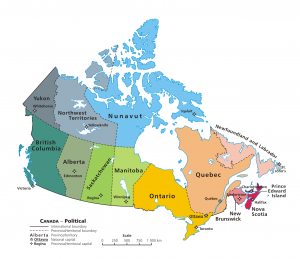By Lisa Wright
You might call it GepPop or CensusRep but it’s all the same thing. General Population and Census Representative targets and samples have one goal in mind – to generate results from groups of people whose demographics mirror those of Canada, all 35+ million people. Or the USA, UK, Australia, as the case may be.
 The process is fairly simple. First, traverse the interweebs and find government census data for the country you’re interested in. In Canada, that’s the StatCan website. Census data isn’t collected every year and it only gets released a year or two after it is collected so your data will always be just a bit out of date. Fortunately, country demographics generally don’t change massively from year to year. For instance, a population might change from 49% to 48% male, but it will pretty much never change from 49% to 15% male. You’re fairly safe.
The process is fairly simple. First, traverse the interweebs and find government census data for the country you’re interested in. In Canada, that’s the StatCan website. Census data isn’t collected every year and it only gets released a year or two after it is collected so your data will always be just a bit out of date. Fortunately, country demographics generally don’t change massively from year to year. For instance, a population might change from 49% to 48% male, but it will pretty much never change from 49% to 15% male. You’re fairly safe.
Using the Canadian census data as an example, we can see that our CensusRep sample of Canadians, whether it is comprised of 200, 500, or 1000 people, should include 49% men and 51% women. And, 20% of our sample should be people aged 20 to 34, 35% should be people aged 35 to 59, 23% should be aged 60 or better, and 22% should be people aged 0 to 19.
But that’s problematic. Conducting marketing research with little children doesn’t make sense – researchers generally don’t want to hear from little children but rather from their parents who have the jobs and income, and who buy the kid’s toys and kid’s clothes.
So, in actuality, most marketing research does not use CensusRep or GenPop samples in the strictest sense of the word. We use CensusRep samples of people who are aged 20 and up. In these cases, instead of calculating percentages based on everyone in the population aged 0 and up, we only calculate percentages based on people of the desired age – 20 and up. And to fall even further from the strictest sense of CensusRep, we might even add an upper age limit, perhaps age 20 to 65.
Now, if we want a CensusRep sample of adult Canadians aged 20 to 65, we first identify people who are aged 20 to 65 in the census data – there are just over 21 million of them in Canada. Then, we determine the percentage of those who are men (still 49%) and the percentage that are women (still 51%). Similarly, we determine the percentage of those 21 million people who fall into various age buckets – 32% are aged 20 to 34, 32% are aged 35 to 49, and 36% are aged 50 to 64.
If you want to make things just a bit more confusing, you could warp the traditional CensusRep definition even further. You could create a CensusRep sample of people aged 65 or better (45% male!), a CensusRep sample of people aged 85 or better (now it’s 35% male!), or even Moms with babies under 2 years of age, or Dads with teens aged 13 to 15.
The point is that the only thing that makes a sample Census Representative is that is matches census demographics for the specified sample of people, not that it matches demographics of the country’s entire population.
And now you know! We’d love to help you design the right CensusRep sample for your research. Please get in touch with us!




